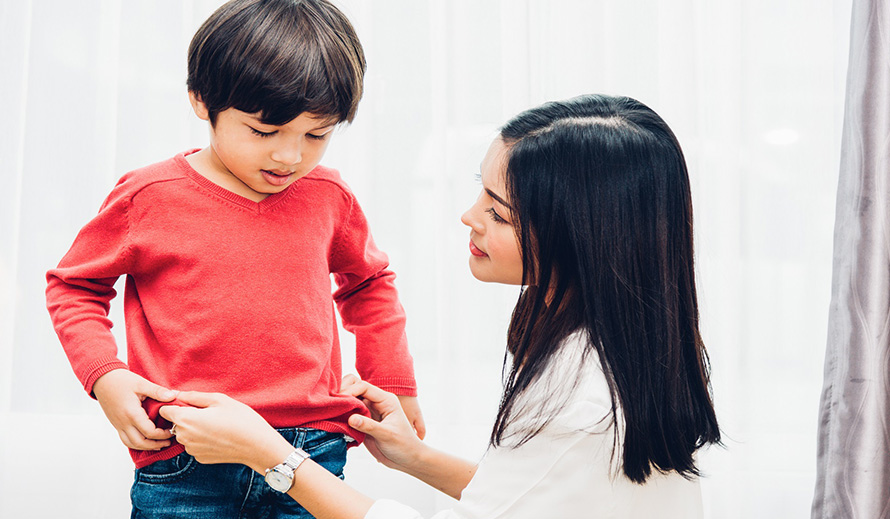Choosing between a favorite Heat jersey and tyrannosaurus rex t-shirt. Pulling up those kiddy cargos and snapping the button independently. Proudly sporting --on day five-- a lively combo of pink tutu, stripy leggings, flower shirt and sparkly high tops. Parents can joyfully guide and support their young children through the developmental journey of learning to get dressed and shape a healthy mindset towards sartorial self-expression, physical appearance and sensible clothes selection.
Time to get dressed!
Children develop fine and gross motor skills from pulling the shirt on and buttoning up. It also helps with cognitive skills like remembering sequence, naming clothes and becoming aware of time and space. When your child shows interest let him help dress by putting the pant leg over the ankle and letting them pull the leg up. Pick items without snaps, buttons, or belt but rather easy items like elastic waist pants. Encourage practice on pillow books to button the flowers and snap the balloons. And set out three outfit options so they can choose a happy choice to hit the playground running.
"Making their own choices such as which shirt to wear also allows toddlers to begin to express themselves. And when your child finally masters the art of getting their clothes on, they will feel capable and independent," says Verywellfamily.com." Allow them to explore the process of getting dressed as much as is reasonable. It's all part of their process of developing into little people who can make decisions and take part in their own self care."
Practice dressing without rushing and break it down to small steps. "If you can be positive and supportive your child is more likely to cooperate. So a lot of practice will go a long way, even if your child has put pants on backwards," says raisingchildren.net.au. Given appropriate opportunities, instructions and expectations, kids should be able to independently dress themselves around kindergarten, says Maternie.com. For cognitive challenges, visit the Child Mind Institute for tips for everyday planning, organizing and deciding.
Happy and Snappy
A Channel 10 article advises parents to select clothes carefully that reflect interests and identity. Girl clothes that are too fitted and small can send a message about thinness and princess shirts can link "a little girl's self-esteem to how much she looks like a Disney princess." Consider "kindness matters" on graphics tees rather than "boys will be boys." "We can look for inspiring and positive children's clothing that empowers and builds up their self-esteem," it says.
And let them enjoy their sunshine yellow everything. "They should wear what makes them feel good, as long as it's weather appropriate. This feeling will translate into confidence and calmness."
Think sensible clothes for preschool adventures. Verywellfamily.com advises parents to send their children through age seven to school with comfortable, easy-potty outfits with jackets for cool days and sturdy sneakers.
Love, Don't Judge
Let your children connect with people who dress differently with an attitude of acceptance over judgment, suggests annapartridge.com. That could mean visiting a family homeless shelter or an unfamiliar religious festival. "Being mindful of the language we use will give our children the right words to use around others to show kindness and compassion."
Foster Clothing Contentment
"Three Parenting Strategies That Cause Kids to Become Materialistic" recommends to not acquiesce every latest-fashion request since materialistic children become materialistic adults. Rather, instill a sense of gratitude for clothes they have and model kindness and charity. "Say no to them sometimes as a way to teach them the difference between needs and wants. Praise your child when you catch them being kind or generous. Emphasize the importance of valuing people rather than things."

